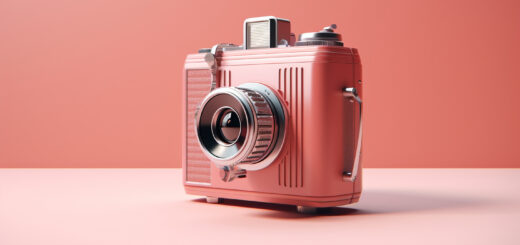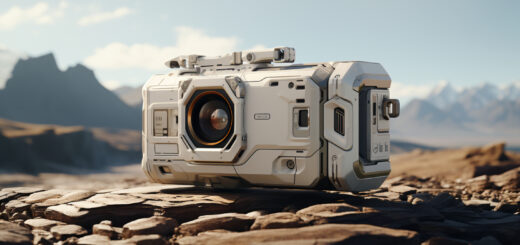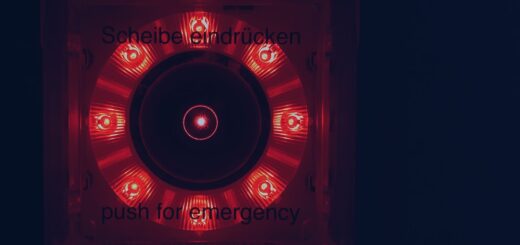AI-Enhanced Photography: Elevating Your Creativity
In today’s digital age, we are constantly surrounded by stunning photographs that capture our attention and ignite our imagination. From breathtaking landscapes to beautifully composed portraits, photography has emerged as a powerful medium of storytelling and self-expression. With the rapid advancements in technology, there has been a revolutionary shift in the world of photography. One such advancement that has taken the industry by storm is AI-enhanced photography.
AI, or artificial intelligence, has had a profound impact on various sectors, and photography is no exception. By harnessing the power of AI, photographers and enthusiasts alike can now push the boundaries of their creativity and capture images that were once deemed impossible. AI-enhanced photography combines the artistry of human vision with the computational capabilities of machines, resulting in extraordinary visuals that were once only a figment of imagination.
With AI, photographers can now explore new possibilities, experiment with different techniques, and produce images that surpass their wildest dreams. Whether it’s enhancing exposure, refining details, or even adding artistic elements, AI technology has opened up a whole new world of photographic potential.
Let’s dive into the exciting world of AI-enhanced photography and explore the advancements that have taken place in this remarkable field. We’ll discuss the advancements in AI image recognition, how AI enhances creativity in photography, and the potential revolution it brings to the industry. So grab your camera and let’s embark on this incredible journey together. Exciting times await!
Advancements in AI Image Recognition
From identifying objects in images to creating stunning visual effects, AI image recognition has rapidly evolved in recent years. Through the integration of sophisticated algorithms and machine learning, AI systems are becoming increasingly adept at understanding and analyzing digital images.
Object Recognition
One of the most significant advancements in AI image recognition is the ability to accurately identify and classify objects within digital images. Gone are the days when simple shape recognition was the extent of a machine’s capabilities. Today, AI algorithms can identify objects with remarkable precision, even in complex scenes.
With the advancements in deep learning algorithms, AI systems can now recognize and categorize a wide array of objects, ranging from everyday items like cars and animals to more specialized objects like medical equipment or agricultural machinery. This has wide-ranging applications across sectors, from autonomous vehicles and robotics to healthcare and security systems.
Image Stacking Techniques
Another exciting advancement in AI image recognition is the development of image stacking techniques. Image stacking involves combining multiple images of the same subject to create a composite image with enhanced details and reduced noise. This technique is particularly useful when dealing with low-light conditions or capturing fast-moving subjects.
By leveraging AI algorithms, image stacking can be taken to new heights. Machine learning models can analyze multiple images, identify the sharpest and clearest parts of each image, and then combine them to create a final image that is sharper, more detailed, and free of noise.
Image stacking has found applications in various fields, such as astrophotography, where it helps capture clearer images of stars and galaxies, and medical imaging, where it enhances the quality of MRI or CT scans.
The future of AI image recognition looks promising. With continued advancements in algorithms and hardware capabilities, we can expect even more accurate and efficient image recognition systems. As a result, industries such as e-commerce, healthcare, and entertainment will benefit from improved automation, enhanced security, and immersive visual experiences. All in all, AI image recognition is revolutionizing the way we interact with images and opening up a world of possibilities for the future.
Enhanced Creativity with AI in Photography
Artificial Intelligence (AI) has had a profound impact on various industries, and photography is no exception. With the advancements in AI, photographers now have access to powerful tools and techniques that enhance their creativity and push the boundaries of what is possible. From improvements in exposure to advancements in time and focus, AI-powered solutions in photography are revolutionizing the way we capture and process images.
Improvements in Exposure
One significant area where AI has improved photography is in exposure. Proper exposure is crucial for capturing high-quality images, as it determines the balance between brightness and darkness in a photo. AI-powered algorithms can now analyze images and make precise adjustments to optimize exposure levels.
Here’s how AI is revolutionizing exposure in photography:
- Automatic Exposure Correction: AI algorithms can analyze the scene and adjust the exposure settings accordingly, ensuring that the subject is properly lit and the details are preserved.
- High Dynamic Range (HDR): HDR photography involves capturing multiple images at different exposure levels and combining them to create a well-exposed final image. AI-powered HDR algorithms can now achieve stunning results by automatically merging and enhancing the different exposures.
- Noise Reduction: AI can intelligently identify and reduce noise in images, resulting in cleaner and more professional-looking photos, especially in low-light conditions.
By automating exposure adjustments and providing intelligent solutions, AI empowers photographers to focus more on their creativity and composition, knowing that the technical aspects are being taken care of.
Time and Focus
Another area where AI has made significant strides in photography is in saving time and enhancing focus. With the help of AI-powered tools and techniques, photographers can streamline their workflows and achieve superior results more efficiently.
Here’s how AI is transforming time and focus in photography:
- Autofocus Optimization: AI algorithms can analyze the scene, detect subjects, and predict their movement, resulting in faster and more accurate autofocus. This allows photographers to capture sharp and in-focus images even in challenging conditions.
- Intelligent Photo Editing: AI-powered photo editing tools can automate complex tasks like background removal, retouching, and color grading. This not only saves time but also enables photographers to experiment with different styles and effects, unlocking new creative possibilities.
- Semantic Image Segmentation: AI algorithms can segment images into different objects and elements, allowing for precise editing and manipulation. This technique is especially useful in areas like portrait photography, where the subject needs to be separated from the background seamlessly.
By harnessing the power of AI, photographers can now focus more on their artistic vision and storytelling, knowing that they have advanced tools at their disposal to enhance their creativity and achieve exceptional results.
In conclusion, AI has revolutionized the field of photography by enabling staggering advances in exposure optimization, time-saving techniques, and enhanced focus. With AI-powered tools and techniques, photographers can streamline their workflows, achieve superior results, and unlock new creative possibilities. The future of photography looks brighter than ever, thanks to the integration of AI.
The Revolution of AI Photography
Artificial intelligence (AI) has revolutionized various industries, and photography is no exception. With the advent of AI-powered cameras and image editing tools, photographers now have access to a whole new set of capabilities that can enhance their creativity and productivity. In this article, we will explore the impact of AI on photography, analyzing how smart machines are combining with traditional techniques and the potential threat to authenticity in the process.
Combining Smart Machines and Traditional Techniques
AI-powered cameras and editing tools are becoming increasingly popular among photographers, thanks to their ability to automate tasks, improve image quality, and offer unique creative possibilities. By leveraging machine learning algorithms, these tools can analyze vast amounts of data, learn from patterns, and make intelligent decisions to enhance images.
One of the most significant advantages of AI-powered photography is the ability to automate tedious and time-consuming tasks. With smart machines taking care of tasks like exposure adjustments, noise reduction, and image retouching, photographers can focus more on composition, storytelling, and capturing the decisive moment.
Another area where AI excels is in image enhancement. By analyzing thousands of high-quality images, AI algorithms can learn to recognize and correct common flaws, such as poor lighting, noise, and distortion. This not only saves photographers time but also ensures consistent and visually appealing results.
AI also offers photographers a new set of creative tools and techniques. For instance, AI-powered cameras can simulate different lighting conditions, allowing photographers to experiment with different looks without having to rely on external lighting setups. Similarly, AI editing tools can apply artistic styles and filters to images, giving them a unique and personalized touch.
Threat to Authenticity
While AI brings significant benefits to the photography industry, it also poses a potential threat to authenticity. AI-powered tools have the capability to generate realistic images and manipulate existing ones to an extent where it becomes difficult to differentiate between reality and fiction.
The rise of AI image generators raises concerns about the authenticity of photographs. With the ability to generate high-quality images based on artificial concepts, AI blurs the line between what is real and what is artificially created. This challenges the traditional notion of photography as a medium that captures objective reality.
The implications of this pose ethical questions, especially in fields where authenticity is crucial, such as journalism and forensic photography. It becomes crucial to develop frameworks and guidelines to ensure transparency and accountability in the use of AI in photography. Photographers and viewers alike need to be aware of the potential manipulations AI can introduce and critically evaluate the authenticity of the images they encounter.
In conclusion, AI has revolutionized the world of photography, providing photographers with powerful tools to enhance their creativity and productivity. However, this progress comes with the need for careful consideration of the potential threats to authenticity. By staying informed and advocating for responsible AI usage, photographers can embrace the benefits of AI while preserving the integrity of their craft.
AI-Powered Image Editing
Today, artificial intelligence (AI) is transforming various industries, and image editing is no exception. AI-powered image editing tools offer an array of features that can enhance and transform your images like never before. From analyzing and enhancing images to incorporating different artistic styles, AI brings a new level of sophistication and creativity to the world of image editing.
Image Analysis and Enhancement
AI image editing tools utilize advanced algorithms to analyze and enhance images in various ways. These tools can detect and correct issues such as blur, noise, and poor lighting, resulting in images that are crisper, clearer, and more visually appealing. With AI image editing, you can transform your ordinary photos into stunning works of art.
Some of the key features of AI-powered image analysis and enhancement include:
- Sharpening: AI algorithms can analyze the details in an image and enhance the sharpness, bringing out fine textures and making the image visually striking.
- Composition Analysis: AI can analyze the composition of an image and suggest improvements to enhance the overall visual appeal. Whether it’s adjusting the cropping, straightening the horizon, or improving the overall balance, AI-powered image editing tools can help you achieve the perfect composition.
- Sky Replacement: AI image editing tools also offer the ability to replace skies in your photos. With a few clicks, you can seamlessly transform a dull and cloudy sky into a vibrant sunset or a clear blue sky, adding a whole new dimension to your images.
Style Transfer Algorithms
Another exciting aspect of AI-powered image editing is the ability to incorporate different artistic styles into your images. Style transfer algorithms use deep learning techniques to apply the characteristics of one image onto another, resulting in unique and visually captivating effects.
Here’s how style transfer algorithms work:
- Content Image: This is the image you want to apply the style to. It could be a photo of a landscape, a portrait, or anything you desire.
- Style Image: This is the image that provides the artistic style you want to transfer. It could be a famous painting, a photograph with a distinct style, or even a pattern.
- Algorithm Magic: AI-powered style transfer algorithms analyze the content and style images, extracting and merging their unique features. The algorithm applies the style of the style image to the content image, resulting in a new image that combines the content and style in a visually stunning way.
By leveraging AI-powered style transfer algorithms, you can create one-of-a-kind images that blend the world of photography and art.
In conclusion, AI-powered image editing tools have revolutionized the way we edit and enhance our images. From analyzing and improving image quality to incorporating different artistic styles, AI algorithms bring a new level of creativity and sophistication to the world of image editing. So, whether you’re a professional photographer or an amateur enthusiast, consider exploring the possibilities of AI-powered image editing to take your images to the next level.
Conclusion
In conclusion, the incorporation of AI technology into photography has opened up new possibilities for photographers, allowing them to push the boundaries of their creativity. From advanced image recognition capabilities to enhanced editing techniques, AI has revolutionized the way we capture and manipulate images. While some may argue that AI poses a threat to the authenticity of photography, it is important to recognize that these technologies are simply tools that can be used to augment and enhance the artistic vision of the photographer. When used with skill and intention, AI-enhanced photography can produce stunning results that captivate and inspire. So, whether you’re a professional photographer or just a hobbyist looking to elevate your photography skills, exploring the world of AI-enhanced photography is definitely worth your time.
If you’re interested in learning more about photography and exploring new techniques, reviews, and tips, be sure to visit Wim Arys photography. Wim Arys, a talented photographer from Brussels, shares his knowledge and expertise on the website, focusing on Sony mirrorless cameras. It’s a valuable resource for all photography enthusiasts, offering helpful articles, camera reviews, and inspiration for your photography projects. Don’t miss out on the opportunity to take your photography to the next level with Wim Arys!
Frequently Asked Questions
- What is AI-enhanced photography?
AI-enhanced photography refers to the application of artificial intelligence technologies in photography to enhance and optimize various aspects of the creative process, including image quality, editing, composition, and post-processing.
- How does AI enhance photography?
AI enhances photography by using algorithms and machine learning techniques to automatically analyze and improve images. It can optimize exposure, color balance, sharpness, and remove noise. AI can also assist in post-processing tasks such as object removal, background replacement, and image retouching.
- What are the benefits of using AI in photography?
Using AI in photography offers several benefits, including improved image quality, time-saving in post-processing, automated editing options, intelligent composition suggestions, and the ability to enhance photos without extensive technical knowledge.
- Are there any AI-powered photography tools available?
Yes, there are several AI-powered photography tools available in the market. Some popular ones include Adobe Photoshop with AI features, Topaz Labs AI software, Skylum Luminar, and Google’s Snapseed mobile app.
- Do I need advanced technical knowledge to use AI-enhanced photography tools?
No, AI-enhanced photography tools are designed to be user-friendly and can be used by photographers of all skill levels. While some understanding of basic photography principles is helpful, these tools often provide automated features that simplify the editing process.



